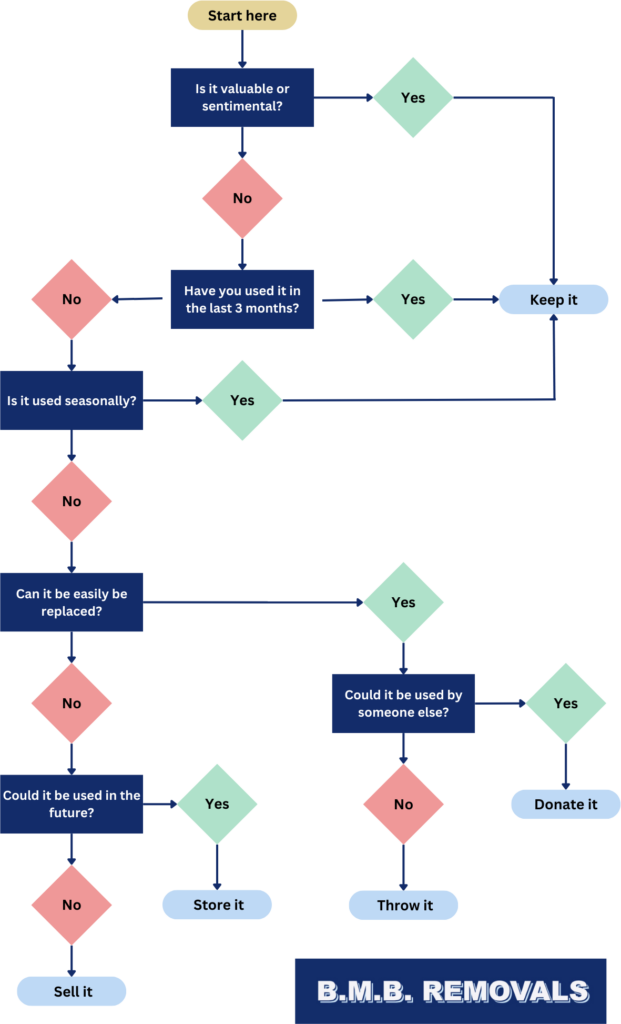Moving house can be an exciting yet nerve-wracking endeavour. You’re probably filled with a mix of anticipation and apprehension about the process ahead. In this article, we’ll provide top tips for packing when moving house to ensure your move is as smooth as possible.
Packing Essentials: What You’ll Need
Before you start, invest in quality packing materials. This includes:
- sturdy boxes,
- packing tape,
- bubble wrap for fragile items,
- and marker pens for labelling boxes.
Packing supplies can be found in local hardware stores, online, or through your moving company. Some companies even provide packing materials as part of their services.
Starting Early: The Secret to a Stress-free Move
Starting early gives you ample time to prepare, organise and avoid the last-minute rush that can lead to haphazard packing and, eventually, damage to your precious belongings.
Set up a moving timeline and follow it diligently. Dedicate some time each day to packing to ensure you’re not overwhelmed on moving day. Breaking down the process into manageable tasks can help you stay organised and stress-free.
The Importance of Decluttering
The less you have to pack, the easier (and cheaper) your move will be. That’s where decluttering comes into play. Not only will you lighten your load, but you’ll also have a fresh start in your new home.
Practical Steps to Sort and Declutter
- Review each item critically and ask yourself: ‘Do I need this?’ If the answer is ‘no’, it’s time to let it go.
- If you tend to hold onto things ‘just in case’, consider the 20/20 rule. If you could replace it for less than £20 in less than 20 minutes, get rid of it.
- Donate, sell, or recycle items you no longer need.

A Room-by-Room Guide to Packing
- Kitchen: begin with non-essentials like fancy dinnerware and seasonal items. When it comes to glassware and dishes, pack them vertically and pad them well.
- Living Room: for electronics, use original boxes if available. Wrap frames and mirrors in bubble wrap and place them in flat, fitted boxes.
- Bedrooms: pack non-seasonal clothing and shoes first. Use vacuum seal bags to save space.
- Bathrooms: start with the items you rarely use. On the final day, pack essential items like toothbrushes, soap and toilet paper in a separate, easily accessible box.
Safe Transport: Protecting Your Belongings
Packing Fragile Items
Wrap each item separately in bubble wrap and secure it with tape. Fill any gaps in the box with packing peanuts or crumpled newspaper to prevent movement.
Use the materials available to you. For example, place tea towels between your frying pans to prevent scratches in transit.
Moving Heavy Items
For heavy items like furniture, consider hiring professionals or using special equipment to prevent injuries.
Frequently Asked Questions
- What should I pack last when moving? Pack essentials such as toiletries, a change of clothes, important documents, and valuable items last. These should be easily accessible on the day of the move.
- How can I protect my furniture during the move? Use furniture covers or blankets to protect against scratches and dents. For disassembly and reassembly, consider hiring professionals.
- Is it necessary to label boxes? Absolutely. Labelling helps you and your movers know what’s inside each box, which room it belongs to, and whether it contains fragile items.
- Should I hire professional movers? While it’s possible to move on your own, professional movers have the experience and equipment to ensure a smooth, efficient move.
- Can I recycle my moving boxes? Yes, cardboard boxes can be recycled or reused. Consider offering them to someone else who’s moving, or take them to a recycling facility.
Posted in Latest News
